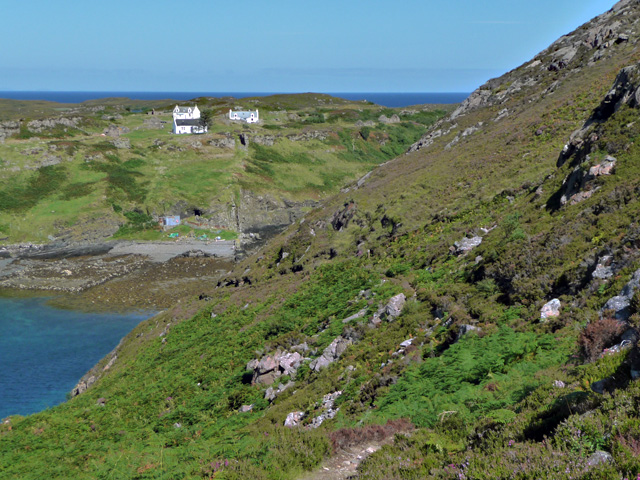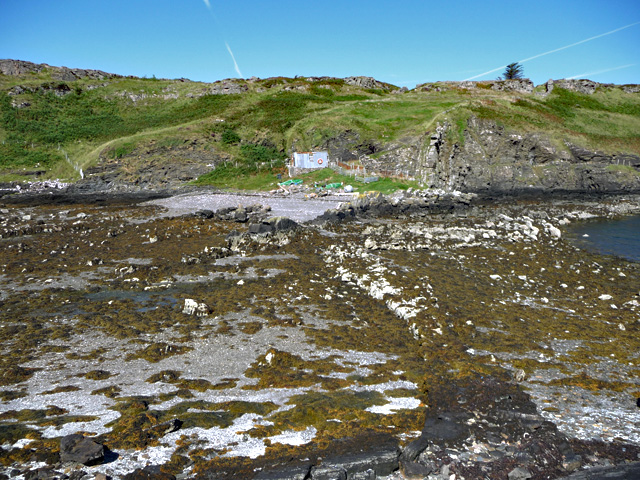![]()
![]()
Fladday 1970
Leader: Mike Baker
Officers: Peter Forsaith, Jonathon Shutes, Terry Samuel, Peter Jackson, Chris Hague-Smith, Launcelot Fleming.
Boys: David Allport, Richard Anderson, Andrew Sevan, Robert Bergman, Robert Buries, Roger Crawshaw, Peter Darbyshire, Ian Deacon,
Stephen Elliott, Andrew Gale, Tim Griffiths, David Haigh, David Martin, Austin McRoberts, Brian Monk, Nigel Paddon, Robert Pooles,
Mark Potter, Humphrey Southall, Eddie Stuart, Philip Tew, Paul Willis, Nicholas Wiltshear.
LEADER'S REPORT
The small island of Fladday is linked by a causeway to the northern part of Raasay, and looks across to the impressive coastline of Skye.
We used MacBraynes as far as Inverarish, and then with the help of Mr. Nicholson's boat, stores and tents were taken up to Fladday. Meanwhile, Mr. Gillies transported bodies and rucksacks to Brochel, followed by a trudge in light drizzle along the track to the fully submerged causeway, across which 'Dignity' ferried the tiring overlanders. A temporary camp was pitched in the failing light, and re-sited next morning on the most suitable area of flat land, close to one of the empty cottages that had been bought recently by Margaret MacLeod of Surrey. Her very kind offer to let us make use of the cottage gave us five very useful rooms which we used for stores and drying downstairs, with fieldwork rooms above for geological and biological work, plus a little den which became Terry's hideout, papers with elaborate charts, maps and statistical detail.
The weather was excellent for the first week, and the beauty of Fladday and the magnificent cliff tracks on Raasay, encouraged all to make fairly extensive recces. Within the next six days, 20 projects got under way, including not only regulars such as ornithological recording, geological hammering, and biological identifications, but also studies of the stars, rotting thatch, shrews, gas-masks, bog, and dung (I might add that there is no correlation between these projects'.) The geologists had a great variety of unmapped territory, but
they wisely left the more difficult tasks to the undergraduates working in the area. However, in the vicinity of Eagle's Cave they produced a detailed geomorphological pattern of faulting ' and igneous injections that jig-sawed the pattern of rock formations.
Our weather watchers were saddled with a 'High' - with rain gauges empty, they prepared charts for when the pressure dropped. It did ... down and down and down ... off the scale which had to be hurriedly revised. The ornithologists seemed to spend as much time dismantling and reassembling, scrubbing and scraping bones, as they did squinting through binoculars.
With no 'Vinga', there was no sailing. Only one of our two canoes was reasonably watertight, and they both had to be kept close to the causeway for ferrying. Podge gallantly operated this service on several occasions, disaster only coming when Passenger Humfrey dodged a missile. Canoe, Humf, and bread supply submerged while hoots of laughter from the soaking 'Splodge' turned to gurgles below the water-line. A sinking canoe had also created problems on an illegal cigarette run several days earlier. Sea-soaked Co-op stocks were seen drying on the tilly lamps that night. Climbers found some good rocks on Raasay, organised by Pete Jackson and Bob Pooles. Volleyball (crook court), fishing (disastrous) and swimming (brrrr!) happened, but no diplomas were awarded.
We had no guitars, nor even any melodious voices to make up a choir. We were very happy to have Launcelot with us for several days; he conducted a Communion service in the marquee and assisted Chris with geology. We all hope that his legs will continue to gain momentum in the coming months. His determination and drive in overcoming his physical disabilities impressed us all. His camp record remained unchallenged to the end!
The food supply both in quantity and quality was of a higher order than we had tasted on previous camps. Thanks must go to John Hutchinson's planning, to Peter's (or was it Eddie's?) organisation and to the 30 cooks. We were very grateful for the friendship of Mr. Parke and the MacLeods at Arnish; for the varied services performed by Peter Gillies; for the use of the schoolroom on the last night which Mrs. Rutherford arranged for us; and to many other people on Raasay who did all they could to help us enjoy our stay; to Margaret MacLeod and the Reading Geographers for the use of their crofts; and to the Department of Agriculture and Mr. Alistair Gillies for letting us use Fladday. I would like to thank members of the S.H.S. Committee for their contributory work in organising the Expedition, the officers for their part and, above all, the boys who were a great bunch and whose enthusiasm and friendliness set the tone of a most enjoyable and highly successful Expedition
Finally, the camp records: - 45 Prunes at a sitting - Podge
Camp marker to weather station and back: - Tim 6 mins 16 sec (Over 60s record - Launcelot 17 mins 52 secs)
Non-stop solo: - Eddie, Phil, Andy, Mick. 71/2 hours
Biggest blister: - Chris 37mm x 19mm x 5mm
Biggest Pollock: - Dave Haigh 1¾ lbs 18"
- MIKE BAKER
 Eilean Fladday Fladda, seen from the track to Torran, viewed from the Raasay side of the causeway.
© Copyright John Allan |

The Caol Fladda Causeway. Looking across the tidal causeway to Eilean Fladday at low tide.
© Copyright John Allan |
|
Bogbean growing in lochan, Eilean Fladda (Fladday) Looking across to The Storr on Skye
© Copyright Donald MacDonald
|